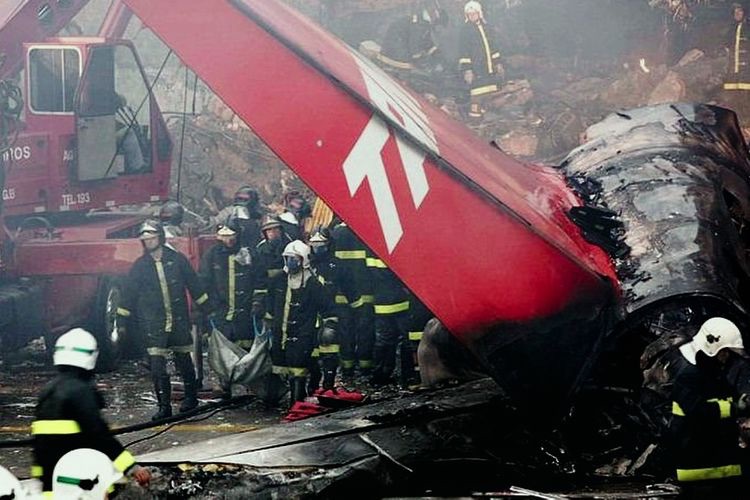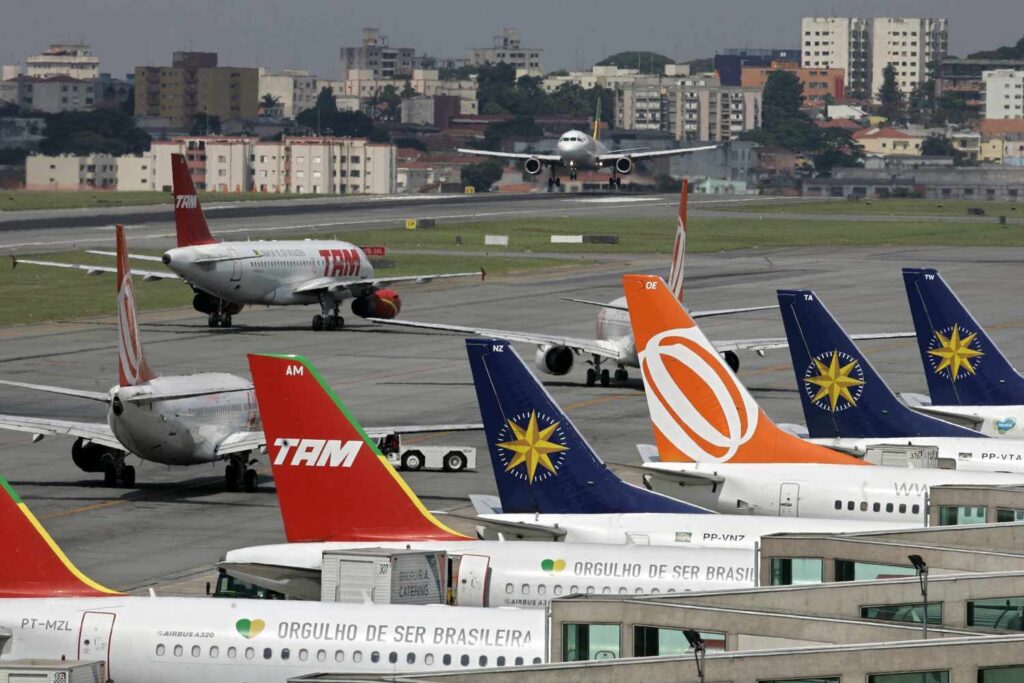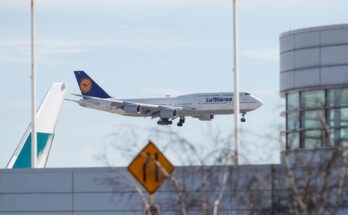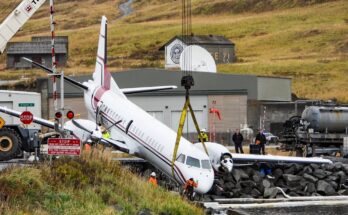
A Tragedy Foretold: Flight 3054 is pulling back the curtains on South America’s deadliest plane crash that killed nearly 200 people
In July 2007, amid an ongoing aviation crisis in Brazil, a TAM Airlinesplane crashed into a building and exploded after failing to land properly. The accident, which many believed could have been prevented, was the result of multiple errors uncovered throughout the investigation.
In A Tragedy Foretold: Flight 3054, which premiered on Netflix on April 23, several relatives of the victims reflected on the heartache they experienced after the tragedy.
“It’s very sad for us to relive what we went through, but I think that it is important for us to tell this story, so that people are aware and make sure that safety is always taken seriously,” Dario Scott, whose daughter Thaís died in the accident, said.
“No money in the world can bring back my daughter I lost,” he continued. “This isn’t about compensation. I don’t want to lose my two children who are still here today.”
So, what caused the TAM Airlines plane to crash? Here’s everything to know about the Flight 3054 accident — and where the relatives of the victims are today

On July 17, 2007, Flight 3054 was on its way to São Paulo from Porto Alegre when it failed to land properly. The aircraft overran the runway and crashed into a TAM building and gas station, which caused a massive explosion
Although pilot Gustavo Rocha explained in the docuseries that Congonhas Airport has always been a “big challenge” to navigate, there were initially three main theories as to what caused the accident
First, experts thought the pilot might have tried to take off again while landing. Second, they thought it was possible that the pilot tried to brake, but lost control of the plane and veered off the runway
The third hypothesis was that there might have been water accumulation on the runway from the rain. In fact, three aircrafts had to abort landing the day before, while eight reported the runway as slippery.
After further investigation via the black box (which records the flight), the landing accident was determined to be caused by an error with the thrust levers, which are similar to a gas pedal in a car. Each aircraft has two thrust levers, one for each of the plane’s engines to speed up or slow down.
The aircraft had two pilots in the cockpit, rather than a co-pilot, and also had a “pinned reverser,” which meant only one could be used, something not all that rare in aviation. However, as explained in the docuseries, when a reverser is pinned, pilots should pull the thrust levers from climb to idle and then immediately move both levers to reverse, including the pinned one.
But on Flight 3054, the pilot only moved the lever with the functional reverser, while the other one kept accelerating.
However, per the docuseries, there were several factors that contributed to the error, from the people who delayed getting the grooves of the runway fixed to the plane manufacturers who did not make the installation of a sound alarm mandatory.
How many people died during Flight 3054?

The aviation accident killed 199 people: all 187 passengers and crew on board the flight, and 12 more individuals on the ground.
According to The New York Times, Julio Redecker — the minority leader of the lower house of the Brazilian Congress — was among those killed on the flight.
While everyone on the flight tragically died, some who were in the surrounding areas on the ground survived the accident — and shared their story in the Netflix docuseries.
Among the survivors was Wanderlei Silva, who reflected on the “hero” he remembered who tried to save his life, saying, “I have eternal gratitude towards this person.”
Who was held responsible for the Flight 3054 accident?

Following the accident, three Brazilian agencies launched an investigation to determine the cause of the tragedy. The Center for Investigation and Prevention of Aeronautical Accidents (CENIPA) concluded that no single individual was at fault; rather, a combination of human and operational errors led to the crash.
While the thrust levers were the final straw, other contributing factors included the lack of regulations prohibiting landings at Congonhas Airport with an inoperative thrust reverser, especially under heavy rain conditions.
Initially, 11 people were formally charged: 10 indicted by the Civil Police and one by the State Public Prosecutor’s Office. These included employees of Infraero (the airport authority), the National Civil Aviation Agency (Anac) and TAM Airlines. Ultimately, the case did not advance in state court.
When the case was transferred to the Federal Public Prosecutor’s Office, charges were filed against three individuals: TAM’s director of flight safety, Marco Aurélio dos Santos de Miranda e Castro, the company’s vice president of operations, Alberto Fajerman, and Anac director Denise Abreu.
In 2015, all three were acquitted.
What was Brazil’s aviation blackout?

As explained in the docuseries, there was “already a crisis happening in the aviation sector” nearly 10 months before the Flight 3054 accident.
At the time of the Flight 3054 accident, there were already two investigations in progress over the “aviation blackout” — a crisis in Brazil’s flight sector between 2006 and 2007 that included massive delays, cancellations and other airport chaos.
With Brazil’s economy doing exceptionally well, passenger numbers were growing, despite not having sufficient infrastructure to keep up with the increased volume. There was already a lack of investment in airport infrastructure and air traffic control, as well as poor working conditions for air traffic controllers, which led to strikes and work-to-rule protests.
The crisis heightened in September 2006, after the Gol Flight 1907 accident that killed all passengers and crew onboard. In the aftermath, many air traffic controllers were suspended for investigation.
What happened in the aftermath of the Flight 3054 accident?

Several safety measures were implemented to ensure there would be positive changes following the tragic accident. In addition to establishing specific training minimums dedicated to braking system failures, the Congonhas Airport was also expanded.
Many of the family members also united to form the Association of Relatives and Friends of the Victims of TAM Flight JJ3054, otherwise known as AFAVITAM, which aimed to seek justice for the victims and their loved ones.
Five years later, a memorial was built to honor the victims in the same place as the crash, surrounding a mulberry tree that survived the implosion of the building.
Some of the families of the victims asked that the memorial be built around the tree, “to show that life can … carry on,” Scott said.
Where are the victims’ families now?

Many relatives of the victims were featured throughout the docuseries, sharing emotional accounts of the days and years following the tragedy.
Simone Felizardo, whose brother Paulo died in the accident, moved to Buenos Aires, Argentina, to escape what she called “the atmosphere of death.”
“I needed to be reborn,” she added.
Ildercler Ponce De Leão, who lost his wife Jamille and son Levy, is focused on raising his two daughters. “God gave me this double honor. He put a smile on my face again,” he said.
Roberto Gomes, whose brother Mário died, said the compensation he received didn’t change his family’s financial situation — and that he still lives the “same old life.”
Eduardo Sato, who was 23 years old when he lost his brother Rogério in the accident, reflected on how he “matured,” saying, “Not even I knew how much I would learn and endure.”
Although Scott shared that he had moved forward, he added that “there are families who are still trying to recover from this tragedy.”
AFAVITAM also still exists today, and members gather every year to pay tribute to the victims, while also making sure the memorial space is kept in good condition.
“If the memorial is deteriorating today, if it’s poorly maintained, this is a sign that we are already starting to forget,” the former attorney general of the public ministry of the state of São Paulo Mário Luiz Sarrubbo said.


